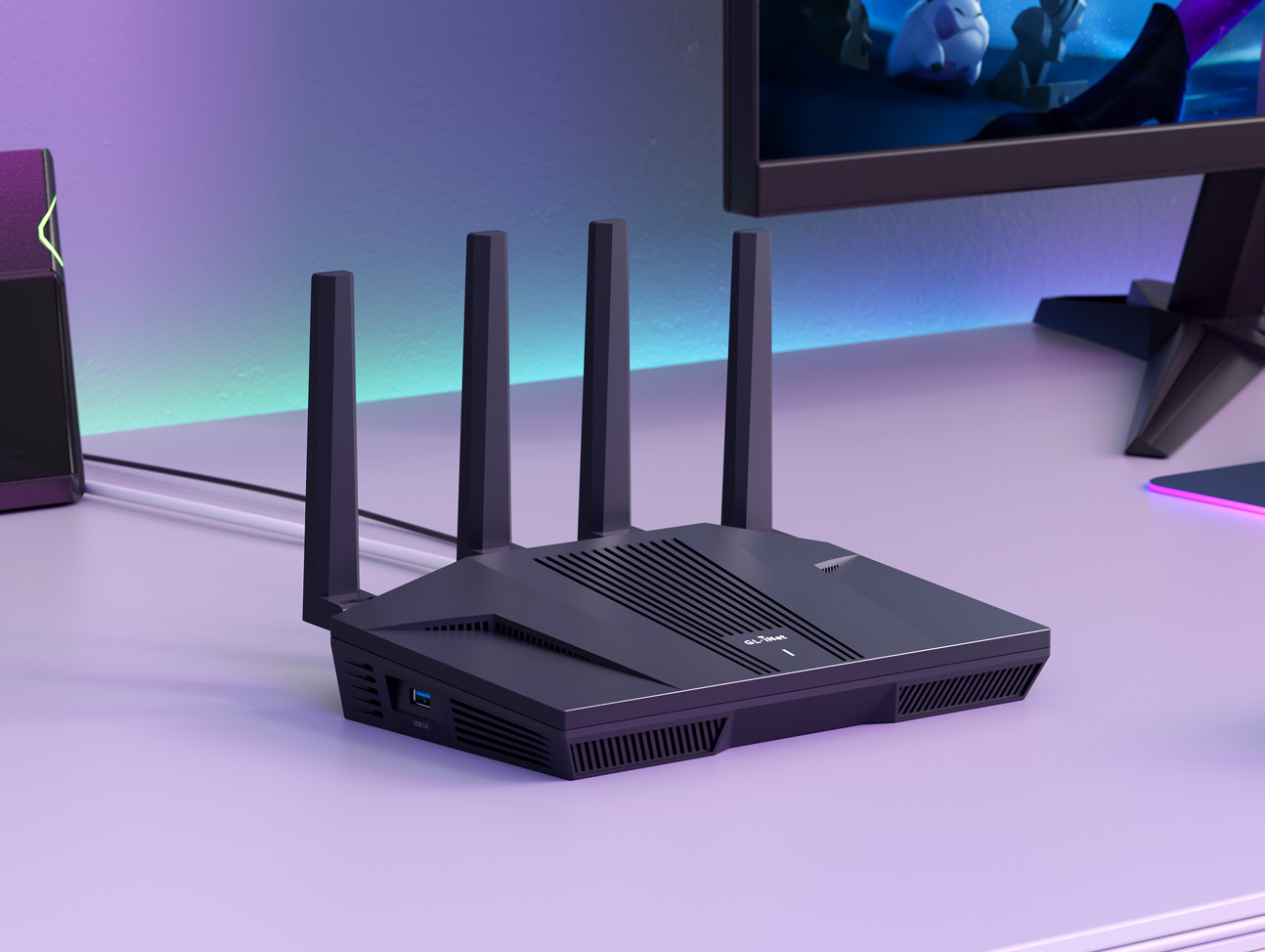MediaTek has unveiled two new WiFi 7 chipsets with the Filogic 860 tri-core Arm Cortex-A73 SoC designed for up to BE7200 mainstream routers and gateways and Filogic 360 WiFi 7 and Bluetooth 5.4 chip for client devices such as smartphones, PCs, laptops, set-top boxes, OTT streaming boxes, etc… for up to 2.9 Gbps bandwidth. The new Filogic 860 and Filogic 360 chipsets provide more cost-effective alternatives to the Filogic 880 SoC for up to BE36000 routers and Filogic 380 clients chip capable of up to 6.5 Gbps PHY data rate, both of which were introduced in May 2022. MediaTek Filogic 860 Filogic 860 specifications: CPU – 3x Arm Cortex-A73 cores clocked at up to 1.8 GHz Network Processing Unit (NPU) – Hardware QoS acceleration and Tunneling Offload Engine for VLAN / PPTP / L2TP / GRE Networking Crypto engine (EIP-197) – For IPv4 NATP / IPv6 / DS-Lite / 6RD […]
Linux 6.6 LTS release – Highlights, Arm, RISC-V and MIPS architectures
The Linux 6.6 release has just been announced by Linus Torvalds on the Linux Kernel Mailing List (LKML): So this last week has been pretty calm, and I have absolutely no excuses to delay the v6.6 release any more, so here it is. There’s a random smattering of fixes all over, and apart from some bigger fixes to the r8152 driver, it’s all fairly small. Below is the shortlog for last week for anybody who really wants to get a flavor of the details. It’s short enough to scroll through. This obviously means that the merge window for 6.7 opens tomorrow, and I appreciate how many early pull requests I have lined up, with 40+ ready to go. That will make it a bit easier for me to deal with it, since I’ll be on the road for the first week of the merge window. Linus About two months ago, […]
OpenWrt 23.05 released with MbedTLS by default, Rust packages, over 1,790 supported devices
OpenWrt 23.05 open-source Linux operating system for routers and resource-constrained headless embedded systems has just been released with over 4300 commits since the release of OpenWrt 22.03 a little over a year ago. The new release now supports over 1790 devices or about over 200 new devices compared to the OpenWrt 22.03 release with notable new targets including the ipq807x target for the Qualcomm IPQ807x WiFi 6 SoCs, the mediatek/filogic subtarget for the Mediatek Filogic 830 and 630 SoCs, and the sifiveu target for the HiFive Unleashed and Unmatched RISC-V development boards. OpenWrt 23.05 switches from wolfSSL to MbedTLS as default because the latter has a much smaller footprint and offers a more stable ABI (application binary interface) and LTS releases, but it does lack support for TLS 1.3, so users who need the latter may still switch to wolfSSL if needed. Another highlight of the new OpenWrt release is […]
GL.iNet Flint2 AX6000 router supports up to 900 Mbps WireGuard VPN with MediaTek MT7986 SoC
GL.iNet Flint2 (also known as GL-MT6000) is a new AX6000 router based on MediaTek MT7986 (Filogic 830) Arm SoC and supporting VPN speeds of up to 900 Mbps using WireGuard and 190 Mbps with OpenVPN. This caught my attention, as I previously covered other GL.iNet routers such as the Spitz AX (GL-X3000NR) and the Beryl AX (GL-MT3000) based on the previously generation Filogic 820 (MT7981B) CPU with claims of (only) 300 Mbps transfer rates with Wireguard, so the new model is supposed to triple the VPN performance. GL.iNet Flint2 (GL-MT6000) specifications: SoC – MediaTek MT7986 (Filogic 830) quad-core Arm Cortex A53 processor @ 2.0 GHz with hardware acceleration engines for Wi-Fi offloading and networking System Memory – 1GB DDR4 Storage – 8GB eMMC flash Networking 2x 2.5 Gbps Ethernet ports 4x Gigabit Ethernet LAN ports 802.11b/g/n/ac/ax WiFi 6 with 4x external Wi-Fi antennas Up to 1,148 Mbps @ 2.4 GHz […]
Tungsten700 SMARC SoM and devkit features MediaTek Genio 700 AIoT processor
Laird Connectivity Tungsten700 SOM is a SMARC system-on-module powered by a MediaTek Genio 700 Arm Cortex-A78/A55 AIoT processor with up to 8GB LPDDR4, 16GB eMMC flash, and a Sona MT320 Wi-Fi 6/Bluetooth 5.3 module based on the Filogic 320 chipset. The board was designed by Boundary Devices, recently acquired by Laird, and is offered with a SMARC 2.1 carrier board that can be used for development or as a single board computer integrated into designs. Tungsten700 SMARC module Tungsten700 specifications: SoC – MediaTek Genio 700 (MT8390) CPU – Octa-core processor with 2x Arm Cortex-A78 cores @ up to 2.2 GHz, 6x Arm Cortex-A55 cores @ up to 2.0 GHz GPU – ARM Mali-G57 MC3 GPU VPU as in “Video Processing Unit” Encode up to 4Kp30 HEVC/H.264 Decode up to 4Kp75 HEVC/H.264/AV1/VP9 VPU as in “Vision Processing Unit” – Tensilica VP6 Vision Processing Unit ISP Single Camera: 32MP @ 30FPS Dual […]
Banana Pi BPI-R3 Mini – A low-profile 2.5GbE router board powered by MediaTek Filogic 830 SoC
Banana Pi BPI-R3 Mini router board is powered by MediaTek MT7986 (Filogic 830) quad-core Arm Cortex-A53 processor with 2GB DDR4, an 8GB eMMC flash, two low-profile 2.5GbE ports, and WiFi 6 support. It also comes with an M.2 PCIe socket that can be used with an NVMe SSD or a 5G cellular module. The BPI-R3 Mini is based on many of the same chips as found on the Banana Pi BPI-R3 board, but with a much more compact design that makes it suitable as a 2.5GbE firewall, wireless router or repeater, home security gateway, home automation gateway, NAS device, and more. Banana Pi BPI-R3 Mini specifications: SoC – MediaTek MT7986A (Filogic 830) quad-core Arm Cortex-A53 processor with hardware acceleration engines for Wi-Fi offloading and networking System Memory – 2GB DDR4 RAM Storage – 8GB eMMC flash, 128MB NAND flash, M.2 2230 NVMe SSD socket Networking 2x 2.5GbE RJ45 ports via […]
Linux 6.4 release – Main changes, Arm, RISC-V and MIPS architectures
Linux 6.4 has just been released by Linus Torvalds on the Linux Kernel Mailing List (LKML): Hmm. Final week of 6.4 is done, and we’ve mainly got some netfilter fixes, some mm reverts, and a few tracing updates. There’s random small changes elsewhere: the usual architecture noise, a number of selftest updates, some filesystem fixes (btrfs, ksmb), etc. Most of the stuff in my mailbox the last week has been about upcoming things for 6.5, and I already have 15 pull requests pending. I appreciate all you proactive people. But that’s for tomorrow. Today we’re all busy build-testing the newest kernel release, and checking that it’s all good. Right? Released around two months ago, Linux 6.3 brought us AMD’s “automatic IBRS” Spectre defense mechanism, additional progress on the Rust front with User-mode Linux support (on x86-64 systems only), the NFS filesystem (both the client and server sides) gained support for […]
Linux 6.2 release – Main changes, Arm, RISC-V, and MIPS architectures
Linux 6.2 has just been released with Linus Torvalds making the announcement on LKML as usual: So here we are, right on (the extended) schedule, with 6.2 out. Nothing unexpected happened last week, with just a random selection of small fixes spread all over, with nothing really standing out. The shortlog is tiny and appended below, you can scroll through it if you’re bored. Wed have a couple of small things that Thorsten was tracking on the regression side, but I wasn’t going to apply any last-minute patches that weren’t actively pushed by maintainers, so they will have to show up for stable. Nothing seemed even remotely worth trying to delay things for. And this obviously means that the 6.3 merge window will open tomorrow, and I already have 30+ pull requests queued up, which I really appreciate. I like how people have started to take the whole “ready for […]










